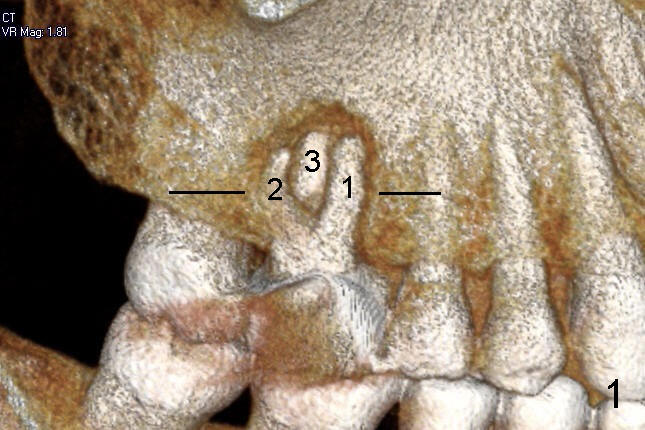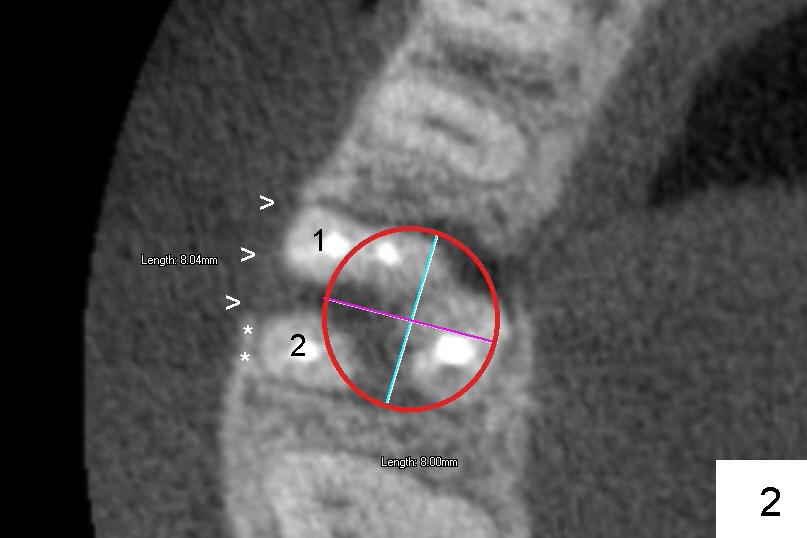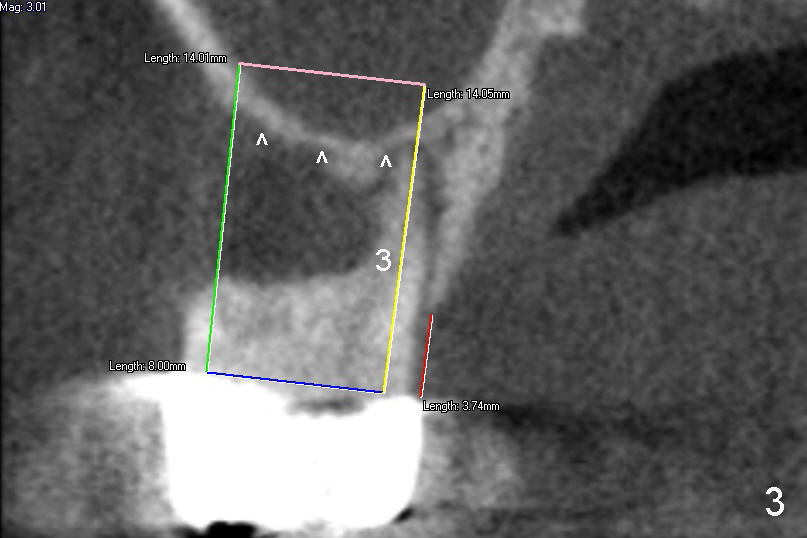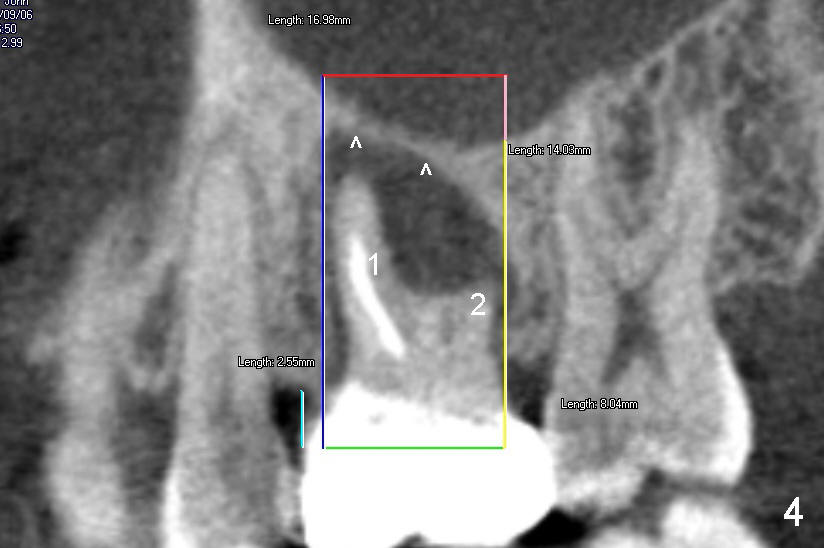



 |
 |
 |
 |
Planning of Long Implant
One of John's upper molars has had trouble for a long time. Finally it has so severe infection that it is extracted. There is severe bone loss (a big hole) around its three roots (Fig.1 (CT 3-dimensional image): 1,2,3). It is planned to place an implant about six weeks after extraction.
The diameter and length of an implant is usually dependent upon the size of the socket immediately or shortly after extraction. Let us make a transverse section as shown by a line in Fig.1.
The section in Fig.2 (2-dimensional image) shows that there is a large bone defect (>) over the root #1, whereas the bone plate over the root #2 is intact (*). A large implant (8 mm in diameter, in red circle) is designed to be placed away from the bone defect and fill the hole after the three roots are gone.
Fig.3 and 4 are so-called longitudinal sections (coronal and sagittal, respectively). They help us decide the length of the implant. These figures show that the socket is long and empty. So we should place an implant as long as possible. The implant may have to push the sinus floor (>) upward to gain its length and tight contact with the bone. According to the measurements, the implant is expected to have 14 or 17 mm long. We will make final decision for the length and diameter of the implant during surgery.
Xin Wei, DDS, PhD, MS 1st edition 09/09/2012, last revision 03/31/2013